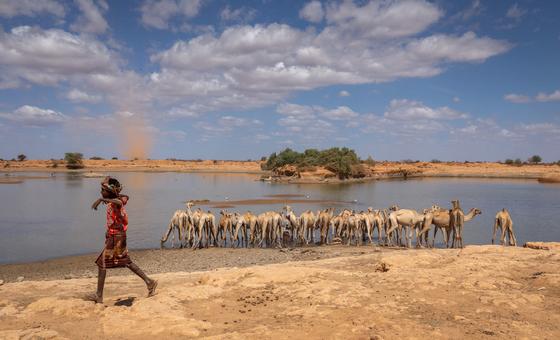
In total, 3.6 million “most vulnerable” people in Ethiopia stand to lose WFP food and nutrition assistance unless funding arrives urgently, warned Zlatan Milisic, the UN agency’s Country Director.
“Over 10 million people in Ethiopia are acutely food insecure. This includes three million people displaced by conflict and extreme weather. Malnutrition rates are alarmingly high,” he told journalists in Geneva via videolink.
Child wasting scare
More than four million pregnant women, breastfeeding women and young children need treatment for malnutrition in Ethiopia. In Somali, Oromia, Afar and Tigray regions, child wasting has passed the 15 per cent emergency threshold.
WFP had planned to reach two million mothers and children with lifesaving nutrition assistance in 2025 but it has been forced to cut costs after receiving only half of last year’s funding.
“What is particularly important now is that our nutritious foods are running out,” Mr. Milisic explained. “So, we are stopping that programme unless something comes really fast and we are looking and we are hopeful, but nothing has come yet.”
Ration cuts the norm
In the first three months of the year, WFP provided food and nutrition support to more than three million people. This included 740,000 children and pregnant and breastfeeding women suffering from malnutrition.
In common with other humanitarian crises impacted by funding cuts, the UN agency has reduced food rations to reach the most vulnerable communities. For the past 18 months this has meant giving 60 per cent rations to most of the 800,000 refugees WFP serves and 80 per cent rations to “displaced and food-insecure – some severely food-insecure – Ethiopians for the past nine months”, Mr. Milisic continued.
Citing access challenges for humanitarians in Amhara region where there ongoing conflict is reported, the WFP official noted that aid operations had been disrupted, threatening relief supplies for more than 500,000 people. “Car hijacking, threats and theft are on the rise and pose serious risks to staff safety and impact the delivery of lifesaving assistance,” he continued.
Hostile environment
Media reports indicate that fighting is also continuing in Oromia region and tensions are rising in Tigray, where civil war killed an estimated 500,000 people from 2020 to 2022 as the Tigray People’s Liberation Front (TPFL) fought the federal army.
Despite the challenging funding and security situation, WFP continues to provide daily school meals to 470,000 children every month. This includes 70,000 children from refugee communities – with conflict-affected and food-insecure areas the focus of relief efforts in northern Ethiopia.
WFP also helps communities to prepare and protect their livelihoods in drought-prone Oromia, Somali and Southern regions, targeting over 200,000 people with early warning messages and cash transfers.
The agency requires $222 million between now and September to maintain its operations and to reach its target of 7.2 million people this year.
“We have the teams, the logistics, the capacities in place, partners, our staff; what we lack are the resources to act and the scale that this situation demands,” Mr. Milisic said.





